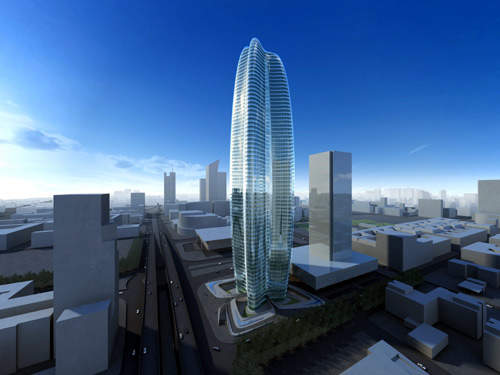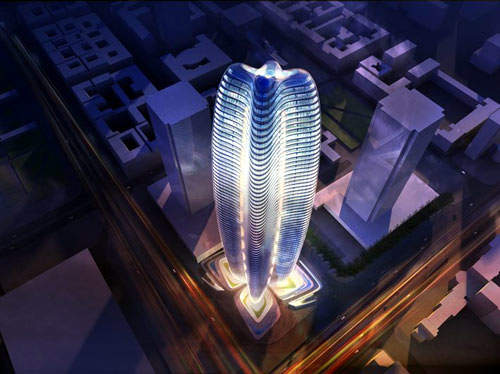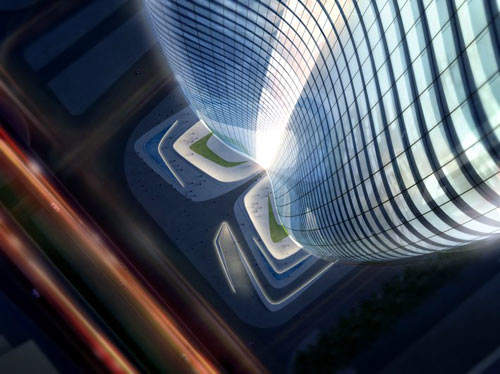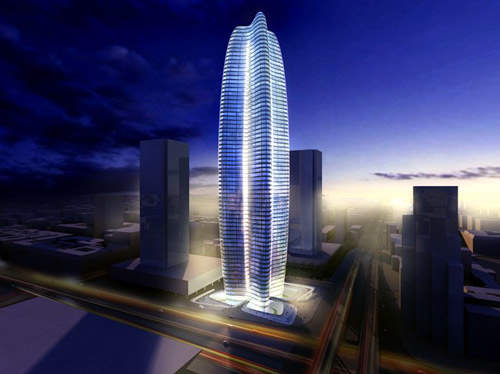The Lilium Tower is a lily-shaped, 240m-high luxury apartment hotel and residential building that will become a unique addition to the skyline of Poland’s capital, Warsaw. The site for the structure is in the centre of the city adjacent to the Marriott Tower, and opposite the Warsaw Central Railway Station.
Designed by London-based Zaha Hadid Architects in association with architect and academic Patrik Schumacher, the tower’s flower-shaped circumference pays homage to the client, developer Lilium Polska SP, and creates a contrasting and complementary focal point among the growing number of skyscrapers being constructed in Warsaw.
LILIUM TOWER CONCEPT AND DESIGN
Lead architect on the project, Markus Planteu, who is also leading a number of projects in Austria and a 100,000m² development in Bucharest (Romania), says the structural design of the tower is “governed by the need to provide a stability core adequate to resist the wind loads associated with a 240m tower.”
The principal adopted is to base the structure on a central hollow spine, known as the ‘core’. The four outer walls of the core are then combined with four diagonal walls which splay out to the four corners of the floor plate. “This provides adequate stiffness and the central tube provides torsional resistance,” says Planteu.
Standing at 240m high with 71 floors, the Lilium Tower will just top the neighbouring skyscraper, the Palace of Science and Culture (237m including spire) to become the tallest building in Poland. The four ‘petals’ of the building will provide 101,205m² of space housing luxury residential apartments, an apartment hotel, 72,027m² of leasable area and spa facilities on the top floor. The Lilium Tower pool will become the highest indoor pool in Europe, surpassing that of the InterContinental Warszawa, which lies on the 44th floor of the 164m-high building.
A double-skin glass façade will provide noise protection as well as thermal insulation and will allow for an entirely smooth external envelope. The main structure will be made of in-situ concrete, with sheer walls in the lower section of the tower.
Each wing of the tower is accessed via individual lobbies on the ground floor, providing respective access to the hotel, apartments, underground restaurant and delivery area (emergency exit). Other access and exit points include a car drop-off, a pedestrian entrance to and from the underground car park and a loading bay.
Underneath the tower is a retail area that will attach to an adjacent exterior mall, as well as the restaurant and extensive underground parking. Residents of the tower will have private access to the retail precinct and the passage system that links to Central Station.
Pedestrian access to each of the lobbies is via four bridges that cross over the mall area – at the same time separating and connecting the tower to the public space. The residential area faces the busy Jerozolimskie Avenue, while the apartment entrance faces the Marriott Hotel. The entrance for the delivery area and emergency exit faces Nowogrodska Street, which is anticipated to have less traffic.
ENERGY
Low-energy services will offset demands of Warsaw’s extreme temperatures, which average below freezing in the winter months, and can reach 30°C in summer. Each apartment will have the option of natural ventilation or energy-efficient mechanical ventilation.
The protective façade is shaped to allow for maximum daylight penetration in winter, and is itself ventilated, which minimises the effect of solar radiation to the occupied space in summer.
This allows for a low-impact heating and cooling system involving borehole water for cooling and heating via a reversible-cycle heat pump.
Seasonal energy storage allows the excess heat from the summer to be stored in the ground under the building and reused during the winter. Any residual heating load will be met from the district heating available at the site; however, this solution is subject to a ground investigation.











